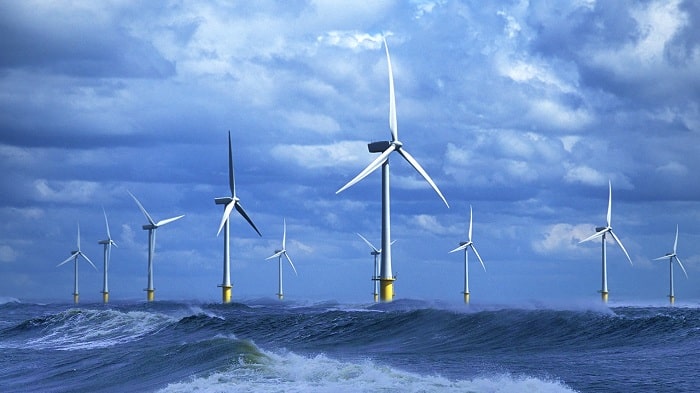Netherlands-based Seawind Ocean Technologies has ambitious targets to install a 6.2MW floating two-bladed demonstrator in Scottish waters next year, followed by an enhanced 12.2MW prototype in 2022.

Seawind’s offshore wind turbine technology passed a major validation milestone in late 2019 when independent certification body DNV GL issued a qualification report and certificate plan for the Dutch company’s Seawind 6 demonstrator.
According to Seawind founder Martin Jakubowski, this represents DNV GL’s D-level certification, a clear green light for the project.
“The execution of the plan will lead to certification for the Seawind 6-126, and it indirectly largely covers Seawind 12-225 as well, because they share the same technology and design principles,” Jakubowski says.
Multiple innovative and unusual features, including a two-bladed upwind configuration with a teeter hub and active hydraulic yaw control, characterise the lightweight offshore Seawind 6 “base” turbine.
The patented concept with a 126-metre rotor diameter introduced in 2015 formed the cornerstone for the evolution of the Seawind 6-126 and 12-225 two-turbine portfolio.
Co-founder and chief technical officer Silvestro Caruso describes some other distinct features.
“The cone-shaped lightweight nacelle of both models comprises a stiff, self-containing structure built in semi-circular-shaped welded steel sheets of up to 20mm thickness,” he says.
“The outer structure is internally reinforced by rafters like a ship’s hull, and structurally linked to a central circular-shape helicopter landing-deck that can accommodate large twin-engine helicopters.
“Uncomplicated helicopter-based service access is enabled with the turbine in stationary mode and the rotor locked in horizontal position.”
DNV GL’s December 2019 report gave a positive judgment on the overall design of the self-containing nacelle with an integrated upper tower section and the bedplate-mounted non-integrated drivetrain layout, according to Caruso.
Design simplicity
This medium-speed geared drivetrain comprises a main shaft with two bearings and a large, fail-safe twin-disk brake system between.
The “floating” front bearing facing the rotor is an SKF Carb type, and the fixed double-row spherical roller bearing facing the gearbox absorbs both axial and radial loads.
The two bearing housings, gearbox and generator are directly mounted on rafters rather than on a (cast) bedplate plus separate welded generator frame as is more common.
From the start, Seawind’s product-development strategy focused on design simplicity and overall robustness to minimise the risk of turbine downtime offshore.
“For this reason, the planetary gearboxes for both the 6.2MW and the 12.2MW models have standard two stages and individual housings for each planetary stage, which will be procured from Chinese supplier DHHI. Unusually, they can be split both horizontally and vertically to enable easy access for inspections, on-site repairs and component exchange,” says Caruso.
“Despite minimal deflections and deformations of the structurally stiff and strong nacelle, we decided on a gear coupling between the main shaft and gearbox to prevent rotor-induced non-torque loads entering the gearbox.”
The simplicity philosophy is also reflected in the brushless induction generator with a full converter instead of a PMG.
The latter electric machines, in Caruso’s view, need more adequate magnet-temperature management and are more sensitive to longer-term operations and maintenance issues.
To protect the gearbox against peak-load related damages, such as a short-circuit of electrical equipment, a torque limiter is placed between the generator input shaft and the gearbox output shaft.
“The power converter, MV-transformer and switchgear are placed inside the integrated support structure base below water level,” explains Caruso.
“This allows easy service access and passive seawater cooling, reduces vibration-related power electronics failure risk, and helps keep down nacelle mass.”
The Seawind 6-126’s calculated head mass of 333 tonnes incudes the nacelle plus rotor, the upper tower section and the central part of the helideck.
In comparison, the initial 6MW direct-drive Siemens SWT-6.0-154 had a head mass of about 360 tonnes, with a larger three-bladed rotor, but no helideck.
The Seawind 12-225 offers a calculated head mass of 647 tonnes (with the same elements as for the 6-126) and, at 225 metres, holds the record for the largest announced commercial rotor diameter. GE’s Haliade-X weighs in at 850 tonnes with a rotor diameter of 220 metres.